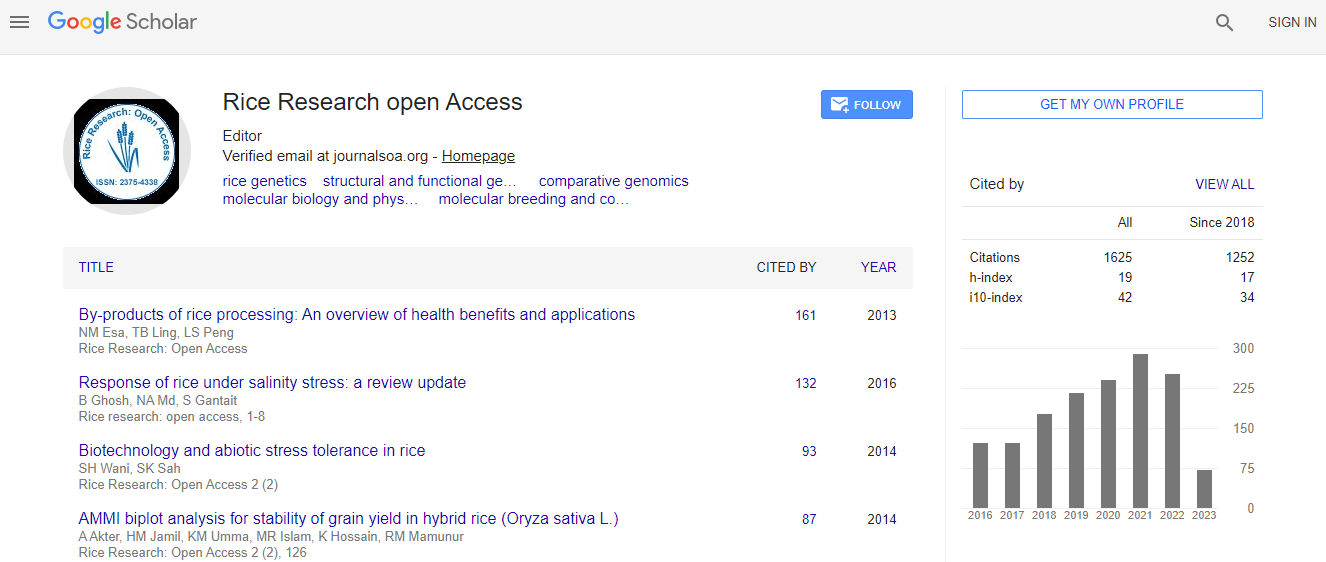Research Article
Purple Rice Extract Exhibits Preventive Activities on Experimental Diabetes Models and Human Subjects
| Hiroshi Shimoda*, Michio Aitani, Junji Tanaka and Shoketsu Hitoe | ||
| Oryza Oil & Fat Chemical Co. Ltd., 1 Numata, Kitagata-cho, Ichinomiya, Aichi 493-8001, Japan | ||
| Corresponding Author : |
Hiroshi Shimoda E-mail: kaihatsu@mri.biglobe.ne.jp |
|
| Received January 06, 2015; Accepted January 27, 2015; Published February 01, 2015 | ||
| Citation: Shimoda H, Aitani M, Tanaka J, Hitoe S (2015) Purple Rice Extract Exhibits Preventive Activities on Experimental Diabetes Models and Human Subjects. J Rice Res 3:137. doi: 10.4172/2375-4338.1000137 | ||
| Copyright: © 2015 Shimoda H, et al. This is an open-access article distributed under the terms of the Creative Commons Attribution License, which permits unrestricted use, distribution, and reproduction in any medium, provided the original author and source are credited. | ||
Related article at Pubmed Pubmed  Scholar Google Scholar Google |
||
Abstract
Purple rice is colored rice containing anthocyanins and has mainly been consumed in Southeast Asian countries. Consumption of a large amount of rice would cause undesirable effects in patients with diabetes or high blood glucose. However, if the colored ingredients have antidiabetic effects, purple rice consumption may be an effective alternative dietary approach to prevent diabetes, instead of white rice. Thus, we evaluated the effect of Purple Rice Extract (PRE) on various diabetes models. PRE inhibited α-glucosidase, α-amylase and aldose reductase activities with IC50 values of 409, 135 and 26 μg/mL, respectively. In a diabetic retinopathy model using retinal microvascular endothelial cells, PRE (30 μg/mL) significantly suppressed cell damage induced by a high concentration of glucose. On the other hand, PRE significantly delayed starch and sucrose absorption at 3 and 1 g/kg, respectively, in rats. Moreover, single oral dosing of PRE (25 mg) to human subjects significantly suppressed postprandial blood sugar elevation after the ingestion of rice (200 g). These results suggest that PRE is effective for the control of blood sugar to prevent the progression of diabetic symptoms.

 Spanish
Spanish  Chinese
Chinese  Russian
Russian  German
German  French
French  Japanese
Japanese  Portuguese
Portuguese  Hindi
Hindi 
